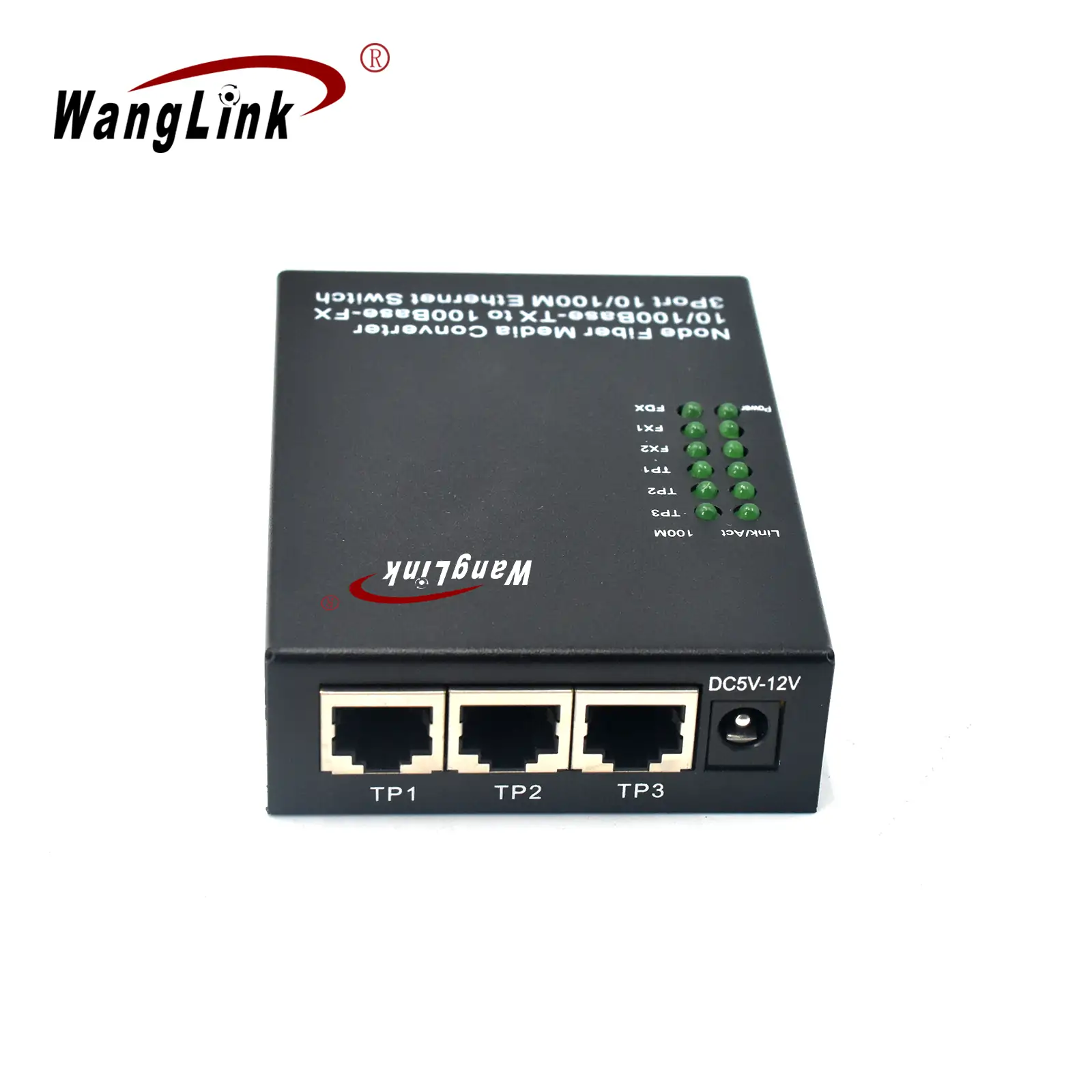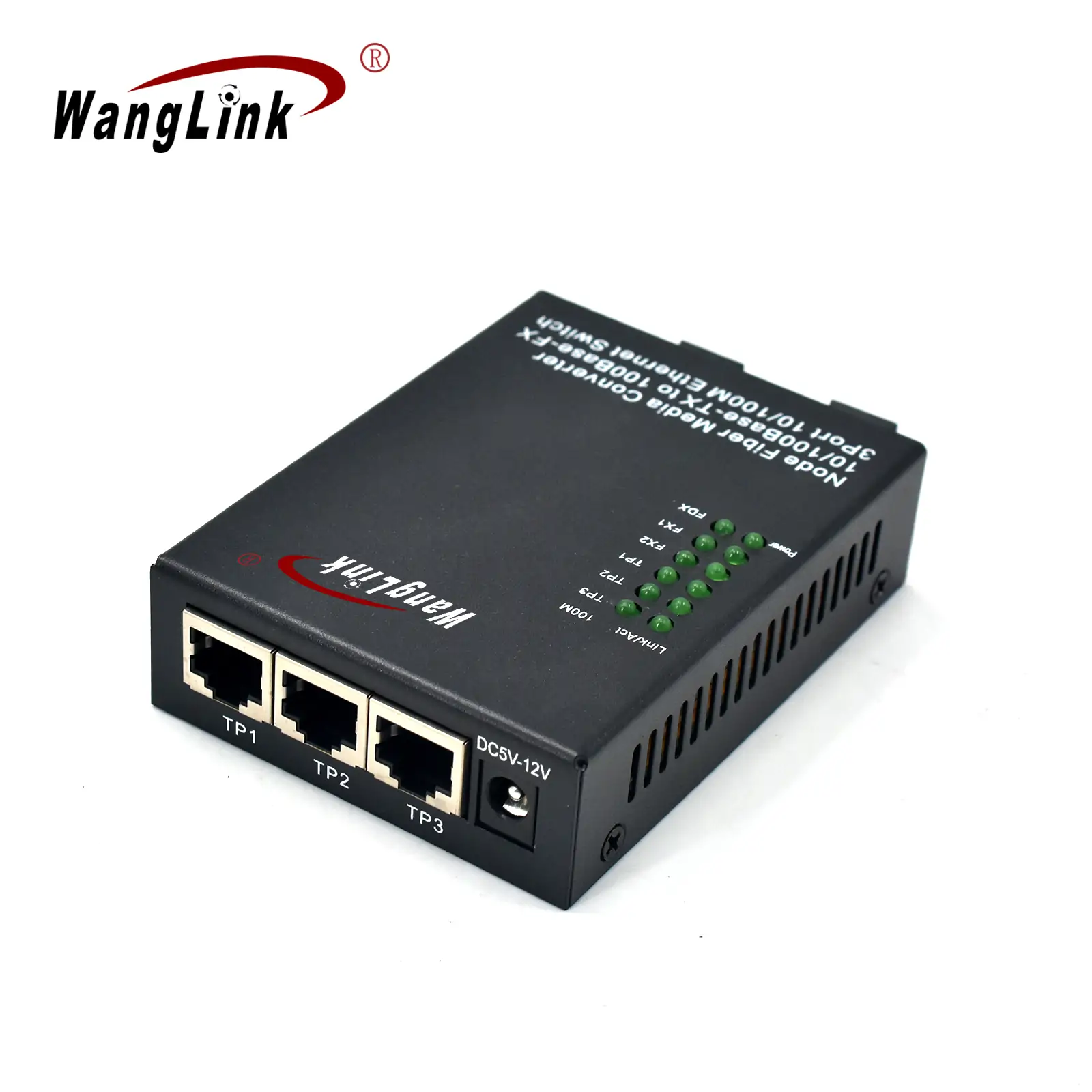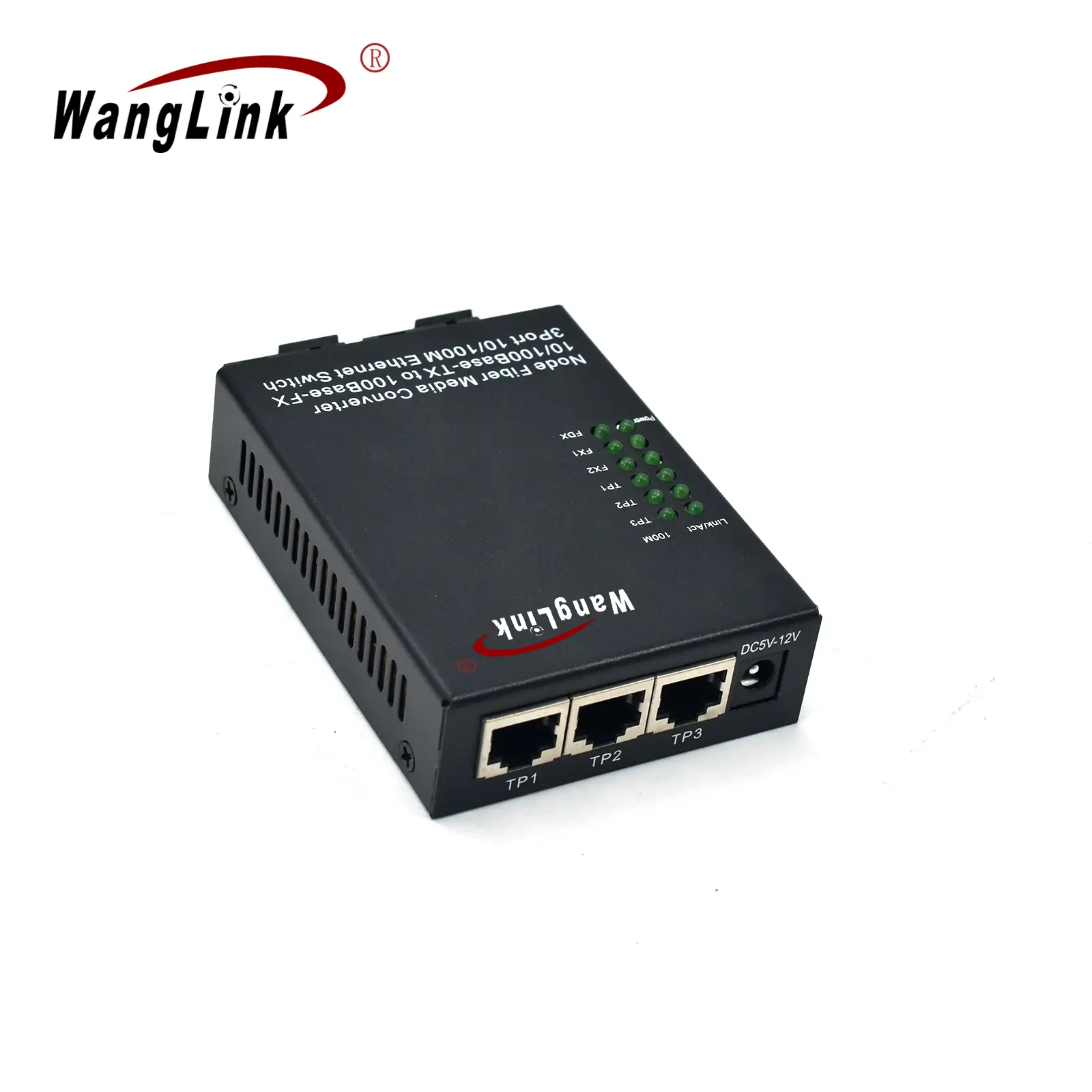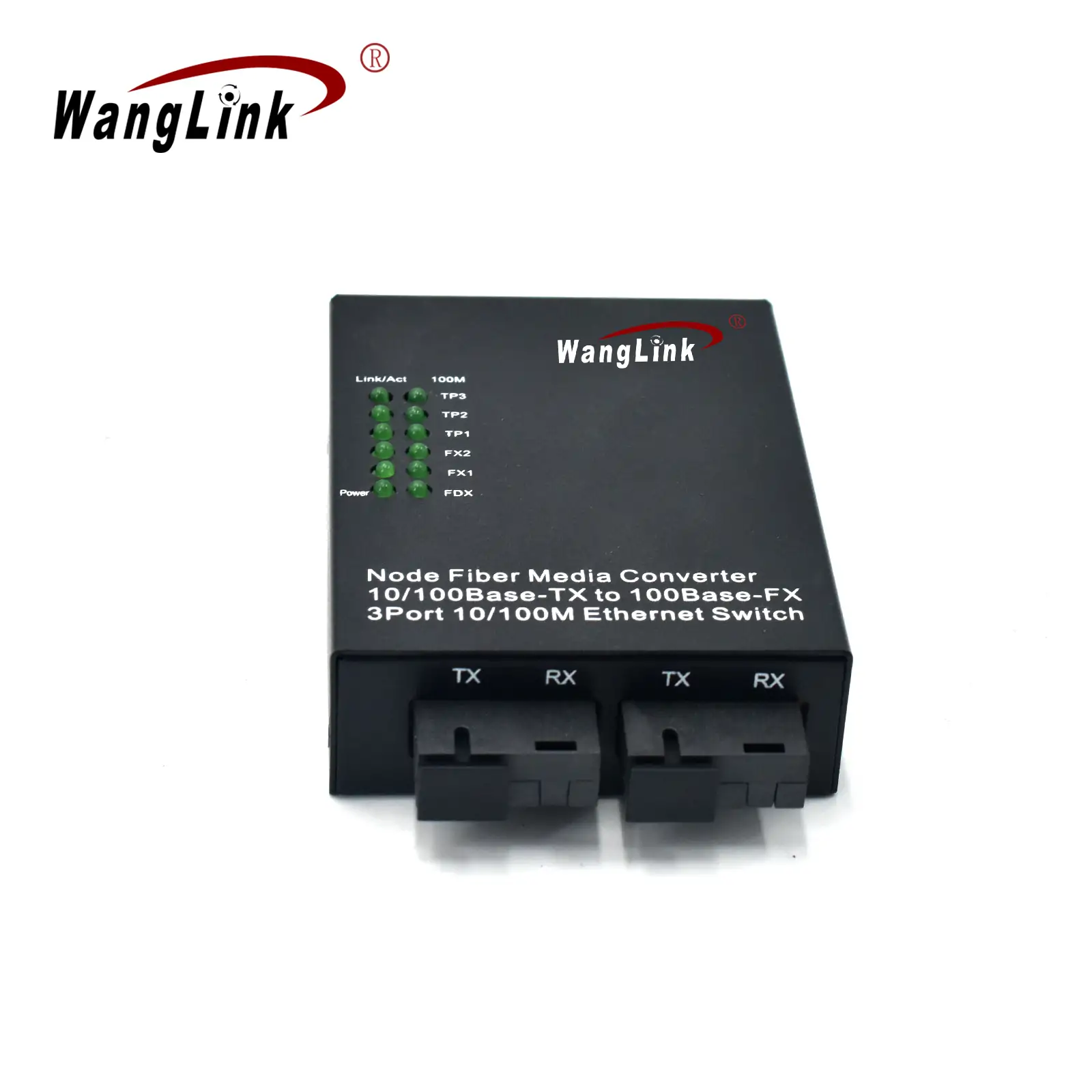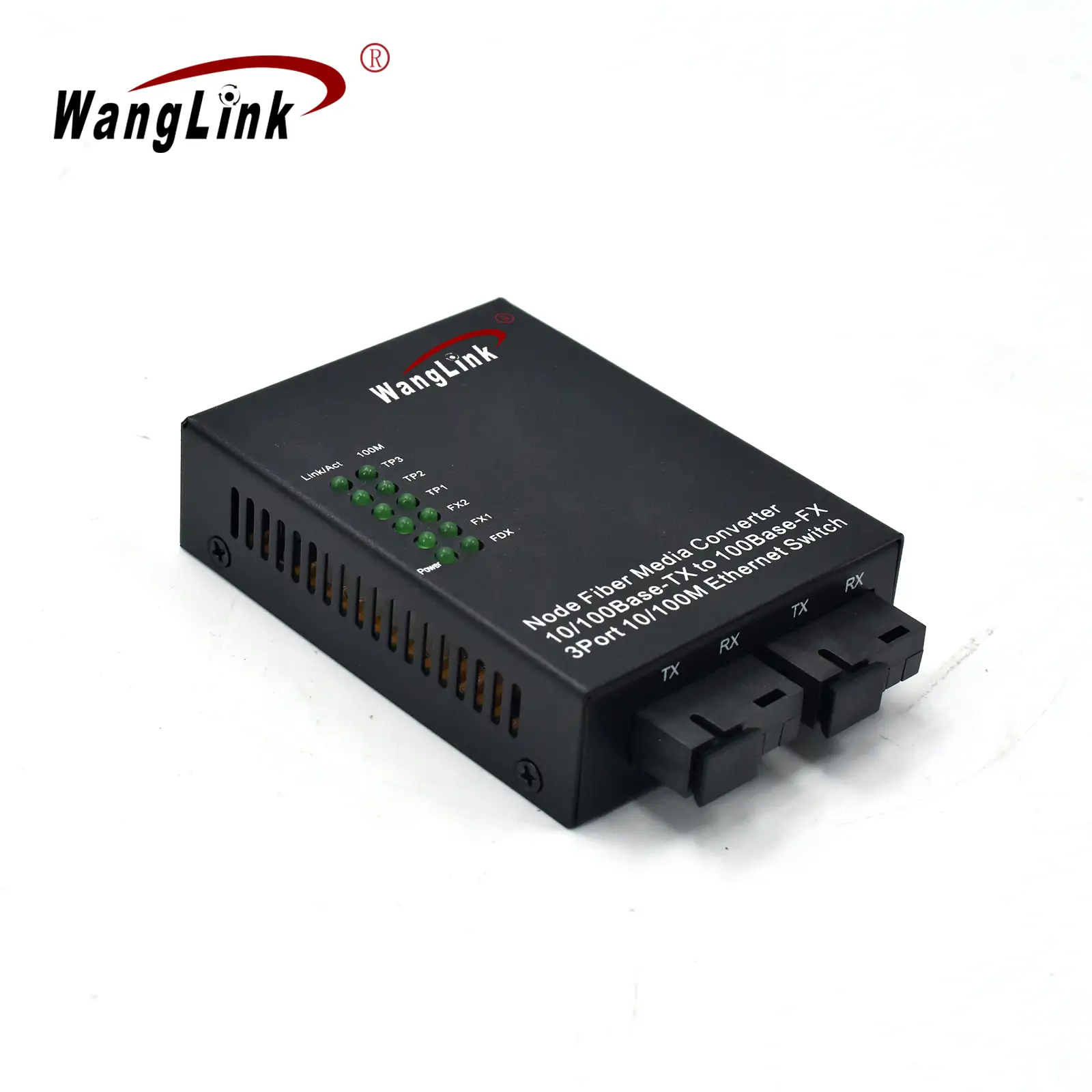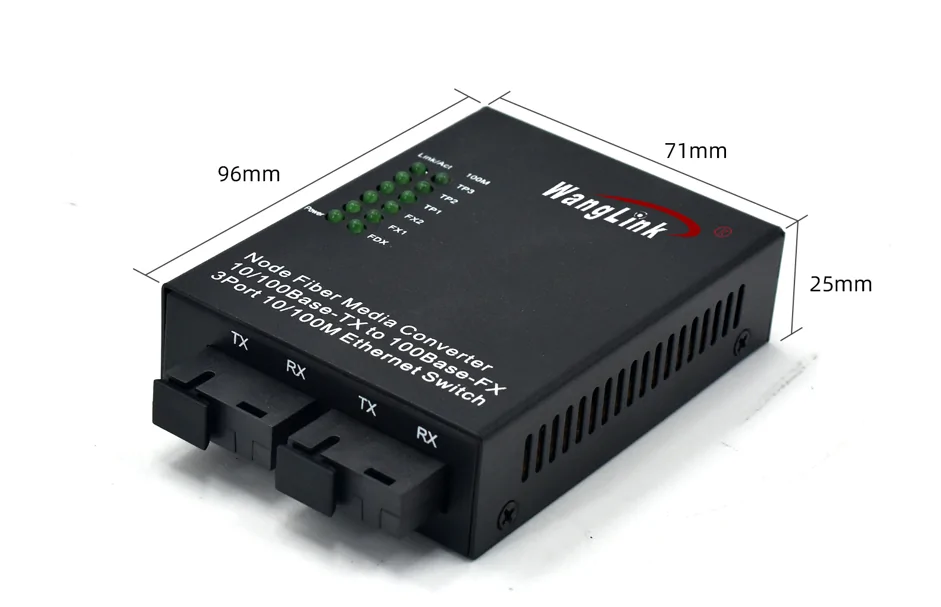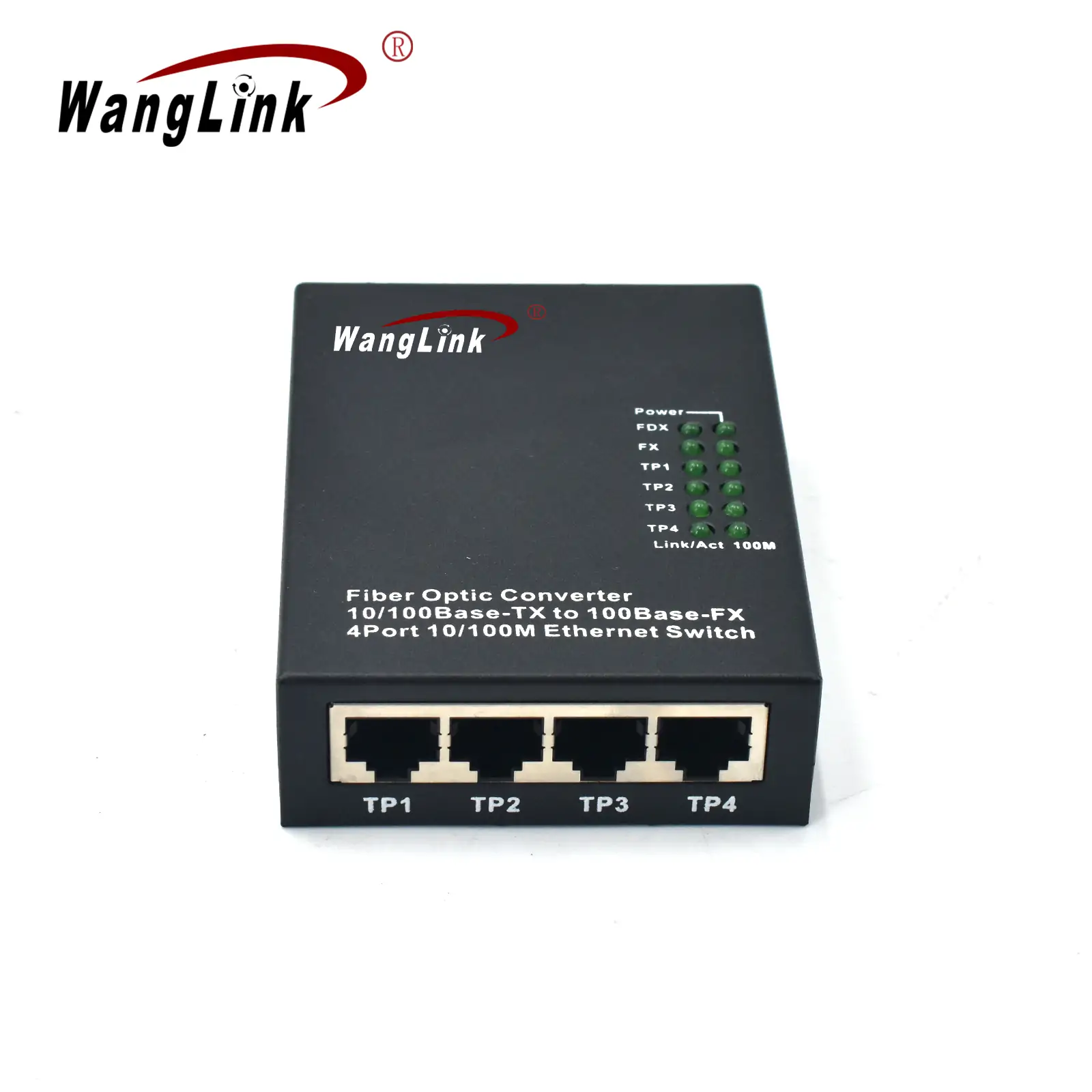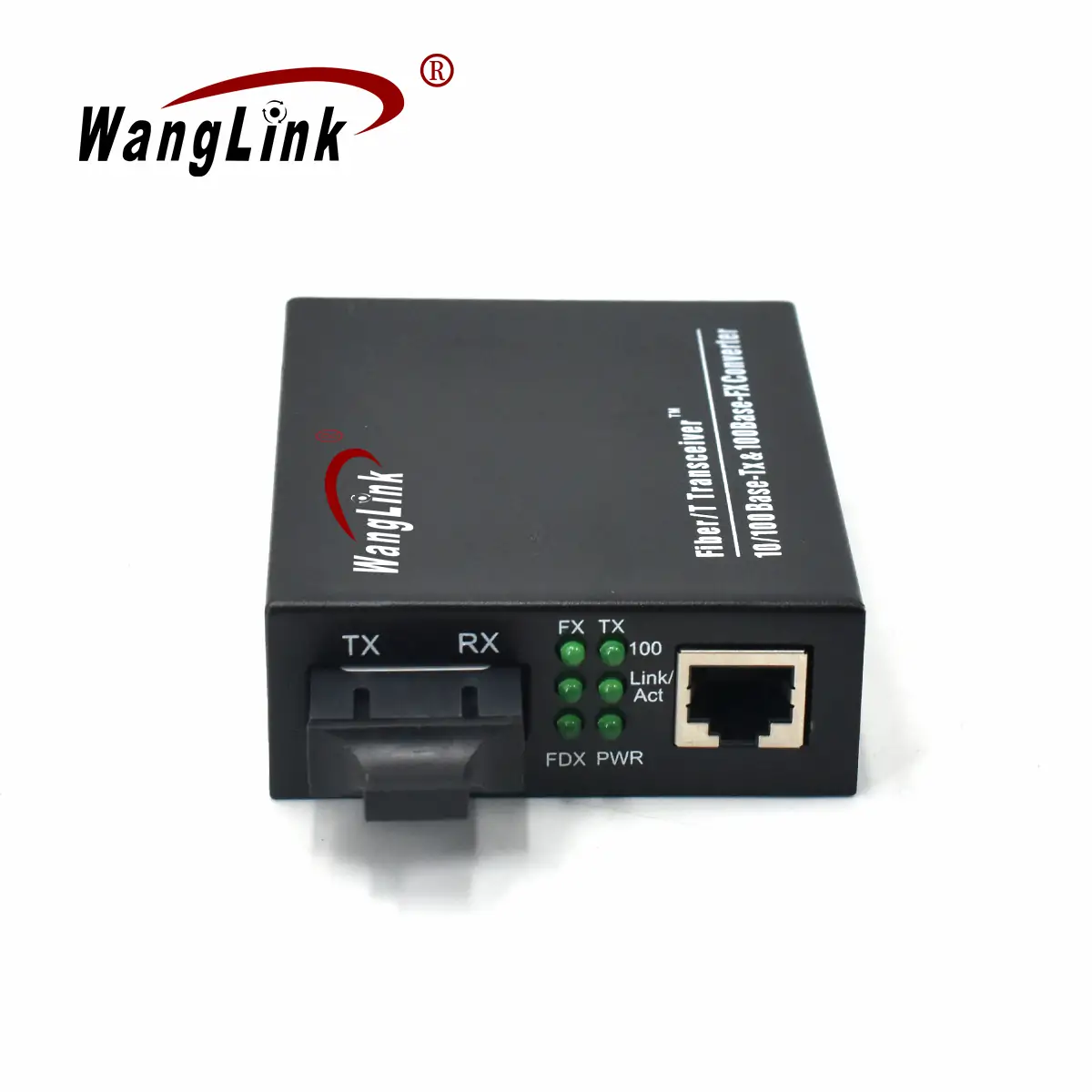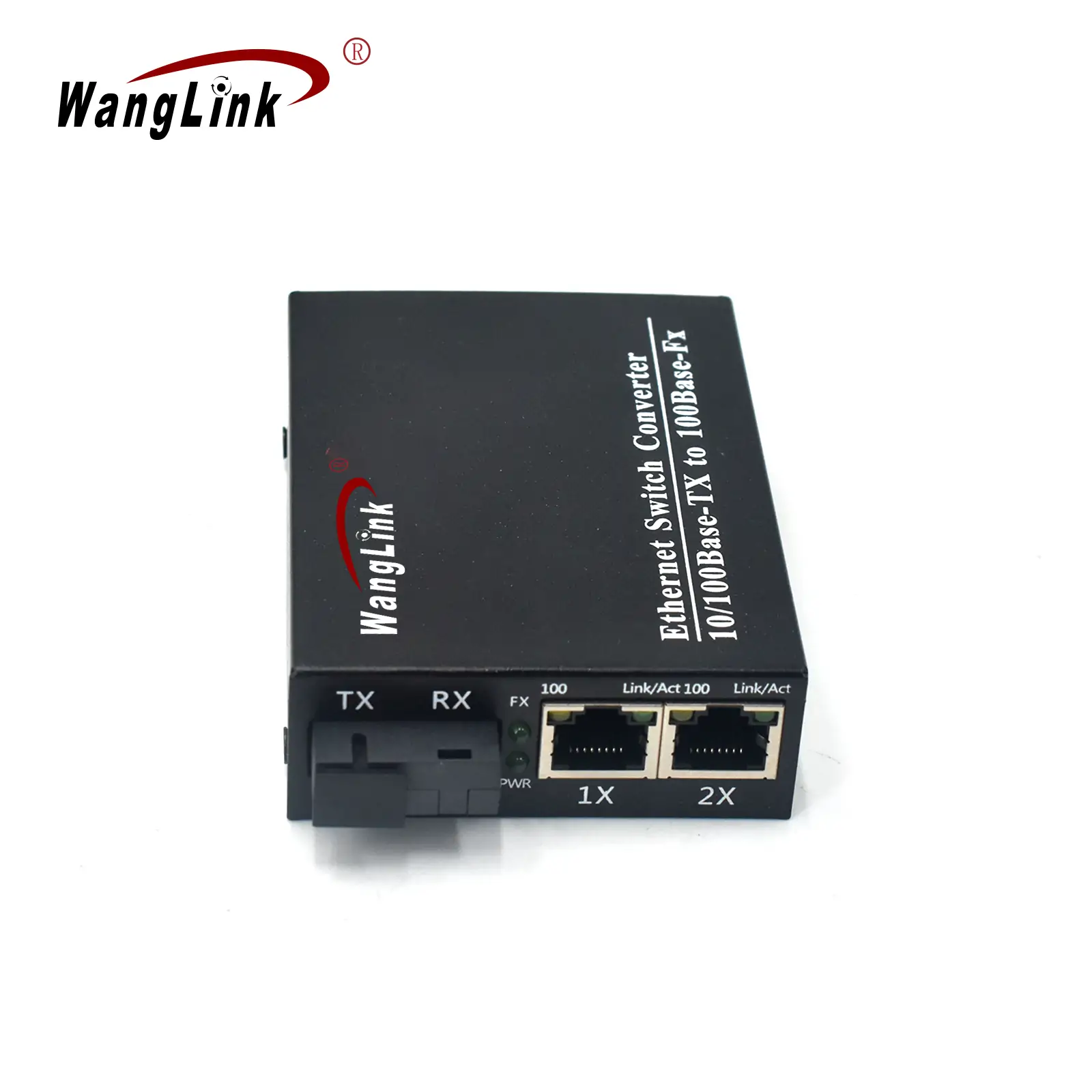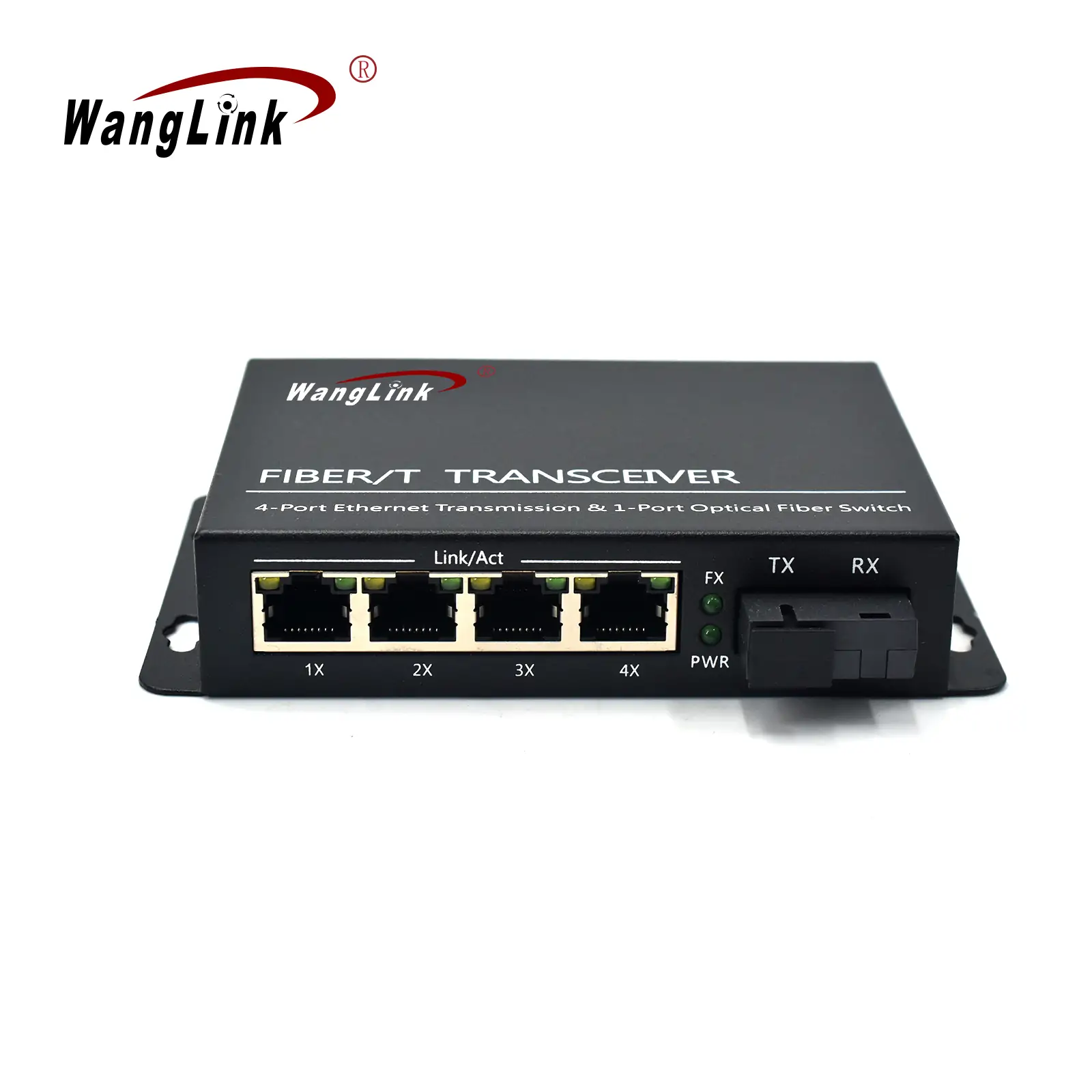Product Overview
The CF302 is a fiber to Ethernet media converter designed to facilitate seamless data transmission between optical and electrical networks. This adaptive fast Ethernet optical fiber transceiver features three 10/100Mbps electrical ports and can convert 10Base-T and 100Base-TX twisted-pair electrical signals to 100Base-FX optical signals and vice versa. The device can be equipped with two optical ports, one of which serves as a backup or for single/multi-mode conversion. The CF302 extends the transmission distance from the 100-meter limit of copper wire to an impressive 120 kilometers using dual transmission technologies—data link layer 2 storage and forwarding mode or physical layer 1 straight-through mode. It supports dual-fiber multi-mode, dual-fiber single-mode, and single-fiber single-mode optical transmission.
Key Features
- Adaptive Speed: Automatically adapts to 10Mbps and 100Mbps environments, simplifying network upgrades.
- Efficient Traffic Control: Built-in efficient switching core to manage traffic and reduce broadcast packets.
- Multiple Ports: Provides three 10/100Mbps adaptive electrical ports for port backup and multi-user access; two optical ports enable fiber optic backup or signal conversion between single and multi-mode fibers.
- Transmission Modes: Supports both full-duplex and half-duplex transmission modes with automatic negotiation.
- Automatic Crossover: Supports automatic crossover of twisted pair ports for easy system debugging and installation.
- VLAN Support: Capable of transmitting VLAN oversized packets.
- Quality of Service (QoS): Ensures reliable VOIP packet transmission.
- Redundant Networks: Supports Spanning Tree Protocol (STP) to form redundant networks.
- Energy Efficient: Low power consumption and heat generation, ensuring stable long-term operation.
Product Parameters
| Item | Specifications |
| Access method | 10/100Mbps |
| Standard | IEEE802.3 10Base-T Ethernet,IEEE802.3u,100Base-TX/FX |
| Fast Ethernet, IEEE802.3x Flow control,IEEE802.1q VLAN, | |
| IEEE802.1p QoS,IEEE802.1d Spanning Tree | |
| Wavelength | 850nm/1310nm/1550nm |
| Transmission distance | Multi-mode: 2 km; Single-mode: 20~120km; Cat 5: 100m |
| Ports | 3 RJ45: Connecting STP/UTP cat 5 cables |
| 2 Fiber port: Multi-mode: SC/ST (50, 62.5/125μm); | |
| Single mode: SC/FC (9/125μm) | |
| MAC address table | 1K |
| Flow control | Full-duplex state: flow control, half-duplex state: back pressure mode |
| LED | PWR (Power); FX LINK/ACT (Fiber link/Act) |
| FX SPD(fiber 100M transmission rate) | |
| TP1/2 LINK/ACT (1/2 port Twisted pair link/Act) | |
| TP1/2 SPD (1/2 port twisted pair 100M transmission rate) | |
| Power | DC5V 2A (external power supply) |
| Power rate | 3.5W |
| Operating temperature | -40~70℃ |
| Working humidity | 5%~90% |
| Storage humidity | 5%~90% no condensation |
| Size | 100*78*25mm |
General troubleshooting and fault diagnosis.
| Fault symptom. | Possible causes. | Fault elimination or troubleshooting. |
| Power indicator light not on. | Power socket not connected or poor contact. | Plug in the socket after connecting the power. |
| TX Link/Act indicator light not on. | Ethernet port cable not connected or poor contact. | Connect the cable properly. |
| Improper cable used. | Using the correct type of cable. | |
| Ethernet terminal device or network card not functioning properly. | Troubleshooting terminal device faults. | |
| FX and FX-Link/Actindicator light not on. | It could be a remote optical device malfunction.Fiber optic cable interruption or connection error.Excessive fiber link loss. | Check the remote optical device’s transmitted optical power and ensure the trunk fiber optic cable is functioning properly to troubleshoot the issue. |
| TX and FX indicator lights are normal, but unable to transmit Ethernet data. | The fiber optic cable is not properly connected to the device, resulting in insufficient optical power. | Connect all the fiber optic connectors properly. |
| When the system is just powered on or when there are changes in network configurations, the devices and switches in the network may go through a configuration process that can take some time. | Once the devices and switches are configured, Ethernet data can be transmitted. If the connection is not established for a long time, the system can be powered off to refresh it. After waiting for a short while, power on the system and try again. |
